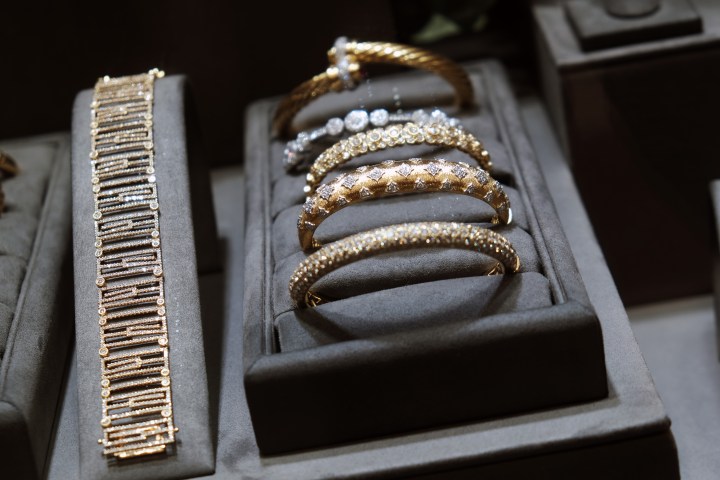
Tax the rich! Tax corporate profits! Curb inflation?

This is just one of the stories from our “I’ve Always Wondered” series, where we tackle all of your questions about the world of business, no matter how big or small. Ever wondered if recycling is worth it? Or how store brands stack up against name brands? Check out more from the series here.
Listener Bonnie Hogue from Santa Rosa, California, asks:
The people most affected by inflation seem to be America’s poor and middle class. So, why not encourage taxes on luxury items, corporate profits and the like to curb inflation rather than hitting the average American’s ability to buy a house, pay for a car, purchase groceries and the like?
When it comes to curbing inflation, the Federal Reserve’s primary tool, however blunt it may be, is raising interest rates. When the Fed raises its benchmark interest rate, money becomes more expensive to borrow.
But the Fed doesn’t have to fight inflation alone, said Lindsay Owens, a former adviser to Sen. Elizabeth Warren and the executive director of the Groundwork Collaborative.
“It’s not the case historically that the Fed chair has always gone it alone on prices. You know, Harry Truman, Franklin D. Roosevelt — they confronted inflation without a lot of rate hikes. They confronted inflation with a suite of policy tools, from tax increases to investing in supply,” Owens told “Marketplace’s” Kai Ryssdal in an interview this week.
As our listener Bonnie pointed out, inflation hits low- and middle-income Americans especially hard. Cristobal Young, an associate professor at Cornell University who studies economic sociology, agrees that fiscal policy should be part of the solution.
“Taxes on high earners or corporate profits would certainly help ease inflation,” Young said. “Any realistic tax hike would not be enough by itself to solve our inflation problems, but it would help, and it would help share the coming pain of disinflation.”
But the revenue raised from taxes would have to go toward reducing the deficit, Young noted, not spending on government programs and projects.
“If you spend those tax revenues from the rich on social programs or infrastructure, it won’t do anything to reduce inflation. If the tax doesn’t lead to less spending, it won’t help with inflation,” he said.
President Joe Biden’s Inflation Reduction Act has provisions aimed at altering the tax code, Young pointed out. The act set a minimum corporate tax of 15% and a 1% tax on corporate stock buybacks.
But Young doesn’t think these measures go far enough.
“It is clear that the inflation problem is more severe than we realized back in the summer,” he said.
The minimum corporate tax, for example, would raise only about $20 billion to $30 billion each year, according to preliminary estimates from the Penn Wharton Budget Model, he explained.
“Remember that the federal budget is about $6 trillion,” Young said. “So, the IRA was more of a balanced budget policy, rather than a big deficit-reducing inflation fighter.”
To effectively fight inflation through a tax-based strategy, Young said you’d need a tax that would raise 10 to 20 times more, or about $300 billion to $600 billion.
Taxing corporate profits can be tricky, said Mark Witte, an economics professor at Northwestern University, because corporations might try to delay declaring their profits.
When it comes to luxury taxes, Young said that the U.S. attempted this in the early ’90s. The George H.W. Bush administration enacted a 10% surcharge on luxury items, which included private boats costing more than $100,000, cars costing more than $30,000 and jewelry costing more than $10,000, among other items.
But critics said the luxury tax “depressed sales and employment in the affected industries” and that it raised $97 million less than expected. Congress repealed the tax on nearly all of the goods in 1993 (it repealed the tax on automobiles about a decade later).
Back then, Americans weren’t fighting inflation, Young pointed out. The luxury tax was meant to raise revenue to help reduce the federal deficit. While depressing sales was seen as a failure of the luxury tax in the ‘90s, that would be the point today.
But defining a luxury good and deciding which products fall under that category would be controversial.
“I think the luxury tax is a bit harder than an income tax. It would mean taxing not just yachts and private planes, but more common rich-people products like the iPhone 14, wedding rings, Teslas,” Young said.
A more effective strategy? Raising the top income tax rate, Young said.
“To me, the most feasible step would be setting a new ‘millionaire tax bracket’: raising the top marginal rate from 37% to 45% on incomes above $1 million,” Young said. “If we passed that next month, it would rein in spending by the rich, moderate inflation and offset the need for more interest rate hikes that are on the horizon.”
Witte agreed that raising taxes in general, through progressive taxation, could help combat inflation.
“Almost anything that slows the economy down is going to be more painful the lower one is in the income gradient,” Witte said. “Unfortunately, I think the most vulnerable people will continue to be the most vulnerable people.”
There’s a lot happening in the world. Through it all, Marketplace is here for you.
You rely on Marketplace to break down the world’s events and tell you how it affects you in a fact-based, approachable way. We rely on your financial support to keep making that possible.
Your donation today powers the independent journalism that you rely on. For just $5/month, you can help sustain Marketplace so we can keep reporting on the things that matter to you.


















